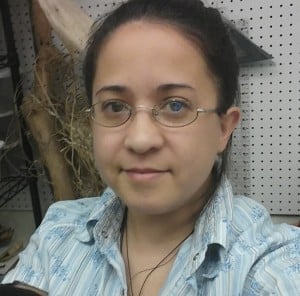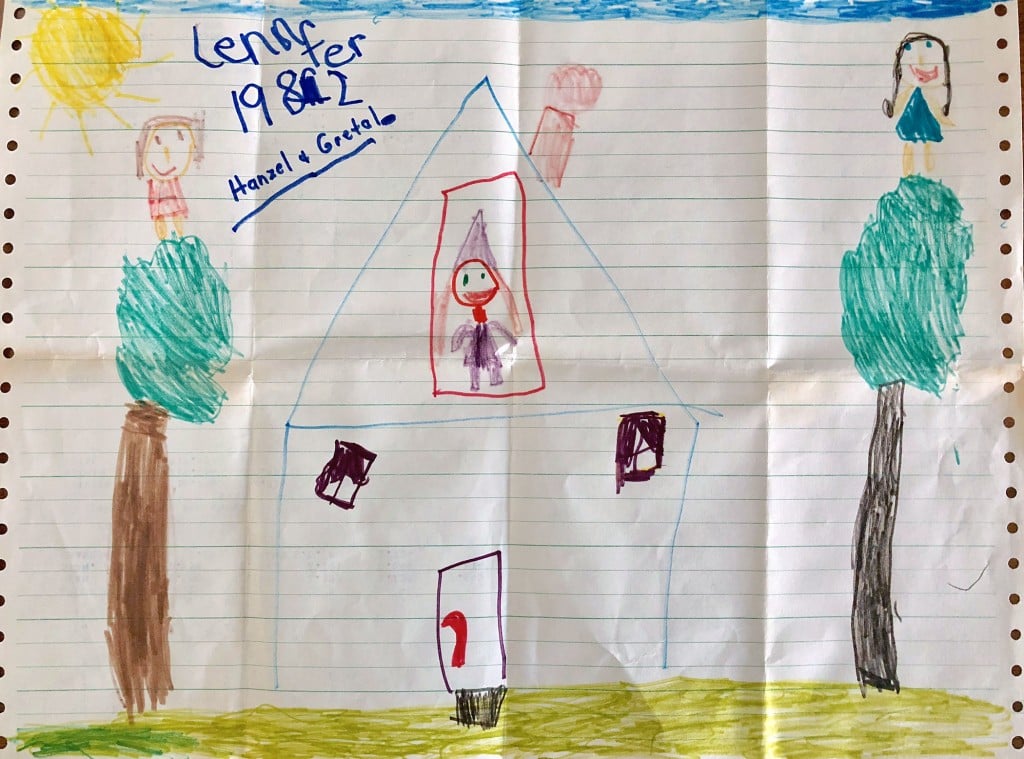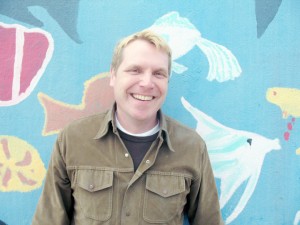Childhood Works Move From The Fridge To The Gallery
ArtandSeek.net August 3, 2018 8Maybe it’s in a dusty box or your parent’s attic, but most of us have a piece or two of artwork we made in grade school. When’s the last time you looked at it? Some Dallas artists are challenging each other to do just that for a show called “Everyone Was A Kid.”
This week in State of the Arts, I talked to two ofthe organizers, Corey Johnson and Rachel Muldez, about what we can learn from the magic marker masterpieces of childhood.
How did you get the idea for this show?
Corey Johnson: Basically I was looking through a bunch of old boxes in my garage. And I came across some artwork I made when I was around nine. And it started me thinking about how special art is when it has that sense of innocence to it.
I also started thinking about how a lot of the Dada artists and surrealist artists would collect children’s art.
Rachel, what did you think when Corey told you about this idea?
Rachel Muldez: Immediately, I knew it was a brilliant idea. It’s adorable and fun, but I also knew I hadn’t seen it done before.
Tell me about the pieces that you found when you were going through boxes.
CJ: I found a whole bunch of drawings from Star Wars, Lord of the Rings. I was really into fantasy when I was that age. The piece I ended up choosing was watercolor of some flowers that I did when I was nine.
RM: I found some really neat clay sculptures. And that’s exciting, because I’m a potter today.
Artists have really been reacting to this idea. Why do you think it’s so appealing?

Rachel Muldez
CJ: There’s all these really great, sweet stories that people are sharing about making the art. And then that gets other people to talk about their experiences. Maybe they’re not a part of the show, but they start to think, “Oh yeah, I remember that time that I got to show this artwork to my mom that I found stuck in a book on a shelf that I totally forgot about. And she was so excited to see it. And she started talking about memories about when it was hanging on the refrigerator.” That’s the kind of thing I’m seeing happen and I love that about the show.
RM: Well, I feel like it’s recovering lost treasures. And it’s something exciting for people to just see their own work.
Childhood artwork gets kept like china or family heirlooms. So it is a family treasure. And I think that for the first time, this treasure is being shown to people like the art that it really is. And I think everybody’s getting behind that.
In a few cases, the images the artists were making as kids look super similar to work they’re making today.
CJ: Isn’t that interesting? It’s something that surprised me. Your line doesn’t really change that much. The way you look at the world is kind of already there when you start to create these works of art as a child of eight or nine years old.

A drawing by J. Rose.
“When I was a child my grandparents often visited and I shared my bed with my grandmother, who I called “Grandmother”. Despite the formality she was a lovely woman, but I worried about having an older person sleep next to me. Every night I lay awake to make sure she was still breathing. After the lights were out and before we quieted she told me fairy tale stories. These were glorious stories because they were never “Disneyfied” and were usually quite dark. When I was six she told me the terrifying tale of Hansel and Gretel. I couldn’t stop thinking about the blind witch feeling the fingers of the children to see if they were fat enough to eat. I don’t remember creating this drawing but the memory of lying awake came back as soon as I found it.” — J. Rose
Does going back and looking at what you did when you were 6 also help you tap into a time in your life when your imagination was much more free?
Oh yeah. When you’re making artwork as a child, well, for one you don’t have all that baggage. Of art school And how it’s supposed to look. It’s like, anything goes. I can draw my trees purple, just because I like the color purple.

Corey Johnson
My statement about the piece that I put in…I was a very dyslexic child. I couldn’t read very well. Artwork was my way of expressing myself. And a way of giving gifts to people and showing that I cared about them. And it was also just a way of communicating.
RM: I agree. I noticed all of the pieces that I have for the show were gifts to my mother. So that’s kind of special, that we got to talk about that between the two of us. What it felt like for her to get the pieces. And what it’s like for her now to know those treasures she has are going to be on display.
We’re not all artists, but all of us have projects and old drawings somewhere in our homes. What’s the benefit of going back and looking at things?
CJ: Having those records of artistic expression from when you were a child says so much about what you were thinking about, what was important to you. These first moments of discovery. It really defines who you are..
RM: I think it brings it back to the level of where perhaps we all really are artists. We certainly were. We have the documentation to prove it.









